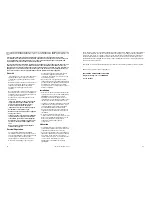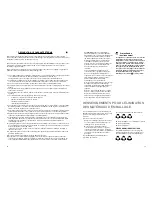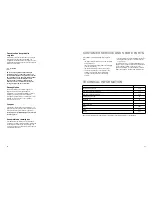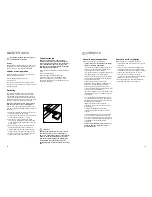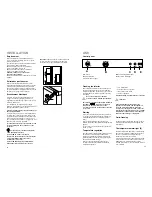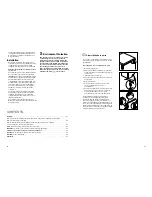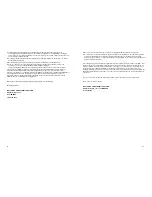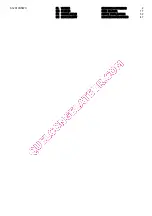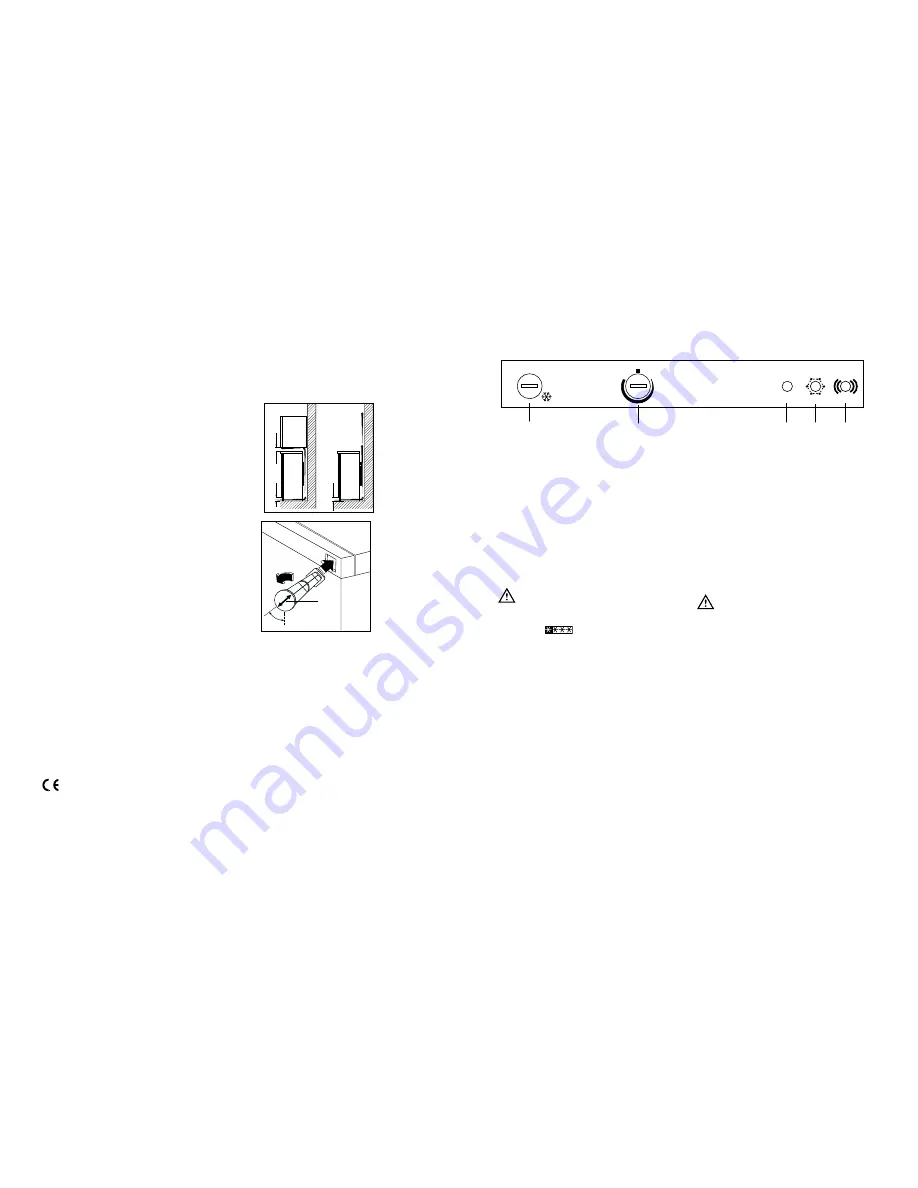
Branchement électrique
Contrôlez, avant de brancher l’appareil, que le
voltage et la fréquence indiqués sur la plaque
signalétique correspondent à ceux de votre réseau.
Tolérance admise: ±6%.
Pour l’adaptation de l’appareil à des voltages
différents, l’adjonction d’un autotransformateur d’une
puissance adéquate est indispensable.
Il faut absolument brancher l'appareil à une prise
de terre réglementaire.
C'est pour cela que la prise du câble d'alimentation
est munie d'un contact prévu exprès. Si la prise de
courant du réseau domestique n'est pas branchée à
la terre, branchez l'appareil à une prise de terre à
part, conformément aux normes en vigueur, en vous
adressant à un technicien spécialisé.
Le fabricant décline toute responsabilité, si cette
norme de prévention des accidents n'est pas
respectée.
-Cet appareil est conforme aux Directives
Communautaires suivantes:
- 87/308 CEE du 2.6.87 concernant la
suppression des interférences radio-électriques
- 73/23 CEE 19/02/73 (Basse Tension) et
modifications successives;
- 89/336 CEE 03/05/89 (Compatibilité Electro-
magnétique) et modifications successives.
Entretoises postérieures
Dans le sachet de la documentation, il y a deux
entretoises à mettre dans les trous prévus à cet effet,
à l’arrière de l’appareil. Introduisez les entretoises
dans les trous situés à l’arrière de l’appareil (flèche
(A) comme indiqué sur la Figure), puis tournez-les de
45° jusqu’à accrochage (flèche verticale).
PR60
A
45°
INSTALLATION
Emplacement
Placez de préférence votre appareil loin d’une
source de chaleur (chauffage, cuisson ou rayons
solaires trop intenses).
Pour des raisons de sécurité, la ventilation doit être
prévue comme indiqué dans la Fig.
Appreil positionné sous armoires murales de
cuisine en surplomb (voir Fig. A).
Appreil positionné sans armoires murales de
cuisine en surplomb (voir Fig. B).
Attention: veillez à ne pas obstruer les
ouvertures de ventilation.
Mettez l’appareil d’aplomb en agissant sur les pieds
réglables.
100 mm
10 mm
10 mm
A
B
NP00
22
Important:
L’appareil doit pouvoir être débranché du
secteur ; il est donc nécessaire que la fiche reste
accessible une fois que l’installation est terminée.
43
The temperature alarm light (E)
The temperature alarm light turns on automatically
whenever the temperature within the freezer rises
above a certain value which might endanger
satisfactory long-term conservation.
It is perfectly normal for the temperature alarm light
to remain lit up for a short time after the freezer is
initially turned on. It will remain lit up until the
optimum temperature for the conservation of frozen
food is attained.
Cleaning the interior
Before using the appliance for the first time, wash
the interior and all internal accessories with luke-
warm water and some neutral soap so as to remove
the typical smell of a brand-new product, then dry
thoroughly.
Do not use detergents or abrasive
powders, as these will damage the finish.
This freezer compartment has been marked with
the symbol
, which means that it is
suited to the freezing of fresh foods, the
conservation of frozen foods and the production
of ice-cubes.
Starting
Insert the power supply plug into the nearest wall
socket (the function indicator light (C) will light up
indicating that the freezer is receiving electrical
input.)
Turn the thermostat knob (B) to the right to a
medium setting (the temperature alarm light (E) will
light up).
To turn off the freezer, turn the thermostat knob to
the «
■
» position.
Temperature regulation
The temperature is automatically regulated and can
be increased to achieve a higher temperature
(warmer) by rotating the thermostat knob toward
minimum settings or reduced (colder) rotating the
knob toward maximum settings.
However, the exact setting should be chosen
keeping in mind that the temperature inside the
refrigerator depends on:
USE
Control panel
min
MAX
C
A
B
D E
ALARM
SUPER
ON
N S
A.
N/S knob
B.
Thermostat knob
C.
Function indicator light
D.
Quick-freezing indicator light
E.
Temperature alarm light
•
room temperature;
•
how often the door is opened;
•
the quantity of food stored;
•
location of appliance.
A medium setting is generally the most suitable.
Important
If the ambient temperature is high or the
appliance is fully loaded, and the appliance is
set to the lowest temperatures, it may run
continuously causing frost to form on the rear
wall. In this case the dial must be set to a higher
temperature to allow automatic defrosting and
therefore reduced energy consumption.
Quick-freezing
For quick-freezing, turn the N/S knob (A) to the «S»
symbol. The quick-freezing indicator light (D) will
then light up.


